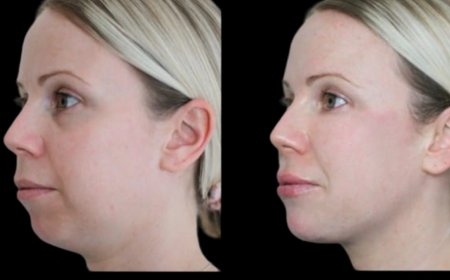Prescriptive Spend Analytics: Going Beyond Insights to Actionable Recommendations

Think about the last time you stared at a dashboard with graphs and charts. Maybe the bars were going up or sliding down, but after the initial hmm, thats interesting, you were left wondering: Now what?
Thats the trap of traditional analytics. They show you what happened. Sometimes, if youre lucky, they tell you why it happened. But rarely do they lean forward and say, Heres what you should do next. The gap between knowing and doing is costly in the high-stakes world of hospital procurement and healthcare spend management.
Enter prescriptive spend analytics technologya step beyond descriptive (what happened) and diagnostic (why it happened), and even predictive (what might happen next). Prescriptive analytics is about action. The voice cuts through the noise and says, Heres the path forward, and heres why it makes sense.
Why Insights Alone Arent Enough
Hospitals today are swimming in data. Supply chains, contracts, invoices, patient care metricsits all tracked, categorized, and analyzed. Procurement leaders get monthly reports packed with insights: this vendor charges more than peers, this department is overspending, this category is trending upward.
But heres the problem: insights dont equal outcomes. You can know that your lab supply costs are 20% higher than benchmark, but without a clear recommendation, that knowledge just sits there. Its like having a diagnosis without a treatment plan.
And lets be honestexecutives dont have time to play detective. They want clarity, not puzzles. Thats why prescriptive analytics is gaining traction. Its not about drowning teams in more information. Its about offering direction.
The Leap From Predictive to Prescriptive
Predictive analytics can forecast trends: Your surgical glove costs are projected to rise by 12% next quarter. Helpful? Sure. However, prescriptive analytics takes it further: If you consolidate glove purchases with Vendor X and renegotiate volume discounts, you can avoid that 12% increase and save $2.5 million annually.
See the difference? One is like a weather forecast. The other is like your GPS rerouting you around traffic in real time. Which would you rather have?
Actionability: The Secret Ingredient
Heres the heart of prescriptive analyticsit doesnt just stop at telling you what might happen. It maps out multiple scenarios and recommends the best option. It weighs trade-offs: do you reduce supplier diversity to cut costs, or maintain redundancy for resilience? Do you renegotiate a contract now or wait until volume thresholds are met?
Its not magic. Its algorithms, machine learning, and advanced models crunching millions of data points. But from the users perspective, it feels almost magicalbecause suddenly, the burden of what do we do about this? is lifted.
A Story From the Field
Lets ground this in reality.
A hospital system noticed through traditional analytics that its outsourced cleaning services were 15% more expensive than average. That was the insight. Useful, but vague.
With prescriptive analytics, the system received actionable recommendations:
- Switch from vendor-based hourly billing to a square-foot pricing model.
- Bundle waste management services with janitorial contracts for better leverage.
- Stagger contract renewals to avoid peak pricing periods.
By following those steps, the hospital didnt just save moneyit reduced service disruptions and improved vendor accountability. Thats the difference between knowing what is wrong and how to fix it.
The Emotional Shift: From Overwhelm to Confidence
Procurement leaders often describe feeling buried under data. Endless spreadsheets. Clunky dashboards. There are too many possible directions and not enough clarity. Its exhausting.
Prescriptive analytics flips that experience. Instead of overload, it creates a sense of control. You dont just see problems. Youre no longer reacting to crises; youre confidently steering the ship.
And that feeling matters. Confidence at the negotiation table changes outcomes. Confidence in decision-making builds trust with executives. Confidence in long-term strategy helps teams shift from firefighting to future-building.
Where Technology Meets Human Judgment
Now, lets be clear: prescriptive analytics doesnt replace people. Its not here to make procurement leaders obsolete. What it does is empower them.
Think of it like a GPS. It shows you the fastest route, but you still decide whether to take it. Maybe youd rather take the scenic road, or maybe you know theres construction the GPS hasnt accounted for. Human judgment still calls the final shot.
Prescriptive analytics arms decision-makers with sharper tools. It surfaces scenarios they might not have considered. It eliminates blind spots. But it never removes the need for human intuition, negotiation skills, and relationship management.
Overcoming Resistance
Of course, any new approach comes with pushback. Some leaders worry: Can we trust the recommendations? Others fear becoming too dependent on algorithms. And vendors? They may resist, knowing hospitals are suddenly armed with data-backed counteroffers.
The key is transparency. Prescriptive systems that clearly explain why they recommend a certain action build trust. Its not enough to say, Do this. The best platforms show their work: Based on three years of data, these benchmarks, and these contract terms, this option saves the most while minimizing risk.
When recommendations come with reasoning, adoption skyrockets.
The Ripple Effect
What excites me most about prescriptive spend analytics is the ripple effect. Better procurement decisions dont just trim budgetsthey strengthen entire health systems.
Savings can be redirected to patient care. Streamlined vendor relationships free up staff time. Smarter contracts reduce risk, leading to fewer operational surprises. Over time, these benefits compound, creating resilience in a desperately needed sector.
And think bigger: what if hospitals across the country adopted prescriptive analytics? The collective savings could reshape how healthcare dollars are spent nationally. More funds for research. More investments in community health. Less waste drains the system.
Looking Ahead
So, whats next for prescriptive analytics? Expect tighter integration with AI, natural language processing, and automation. Imagine asking your system, How can we reduce imaging costs this year? and receiving a tailored, data-backed plan in seconds. Or picture a scenario where the system doesnt just recommend a vendor switchit automatically drafts the RFP for you.
The future isnt far off. Were moving toward a world where procurement teams spend less time crunching numbers and more time leading strategy.
Closing Thoughts
Prescriptive spend analytics is about bridging the gap between knowing and doing. Insights are nice. Predictions are better. But recommendationsclear, actionable, and tailoredare transformational.
Hospitals dont need more dashboards that tell them whats broken. They need roadmaps that show them how to fix it. Prescriptive analytics provides exactly that.
So the next time youre drowning in reports, ask yourself: Do I want more data or direction? You can land on Valify.
Because the future of spend management isnt about insights alone. Its about taking action with clarity, confidence, and purpose.















